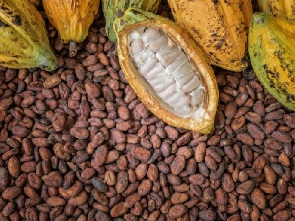Farmers in Ivory Coast’s cocoa-growing regions said on Monday that more rain was needed to sustain the October-to-March main crop, as dry Harmattan winds descended further into the country last week.
Ivory Coast, the world’s top cocoa producer, is in the dry season, which runs from November to late February. Harmattan winds sweep in sand from the Sahara, which can ravage cocoa pods and sap soil moisture, leading to smaller beans.
Several farmers said on Monday the Harmattan had reached their regions. Although the winds remain moderate for now, they said more rain was needed to improve soil moisture and boost the main crop.
Farmers said that in January they would focus on the final stage of the main crop and the beginning of the April-to-September mid-crop.
In the western region of Soubre, farmers said soil moisture would be sufficient to sustain the crop if the Harmattan remained gentle.
“We still have crops to harvest and there are small pods on trees for later. We hope the Harmattan won’t be strong,” said Honore Bayou, who farms near Soubre.
Data collected by Reuters showed rainfall in Soubre, which includes the towns of Sassandra and San Pedro, was 7.2 millimetres (mm) last week, 0.2 mm below the five-year average.
In the centre-western region of Daloa, which produces a quarter of national output, farmers said they hoped for rain to help trees survive the dry season.
“With the Harmattan blowing, we need strong rainfall for trees to yield well in January,” said Raphael Kouame, who farms near Daloa.
Rainfall in the region of Daloa, which includes the town of Bouafle, was 3.2 mm last week, 0.2 mm above the five-year average.
Rainfall was below average in the western region of Man, in the southern regions of Agboville and Divo, and in the eastern region of Abengourou. But farmers said crops would not suffer if the Harmattan and dry season remained mild.
In the central region of Yamoussoukro, rainfall was 9.1 mm above average at 11.3 mm, and 1.1 mm above average in the central region of Bongouanou, at 3.3 mm.
Average temperatures in the cocoa growing regions ranged from 26.2 to 28.4 degrees Celsius.
Business News of Tuesday, 25 December 2018
Source: Reuters Ghana
Ivorian cocoa farmers hope for more rain as dry winds advance
Entertainment
















